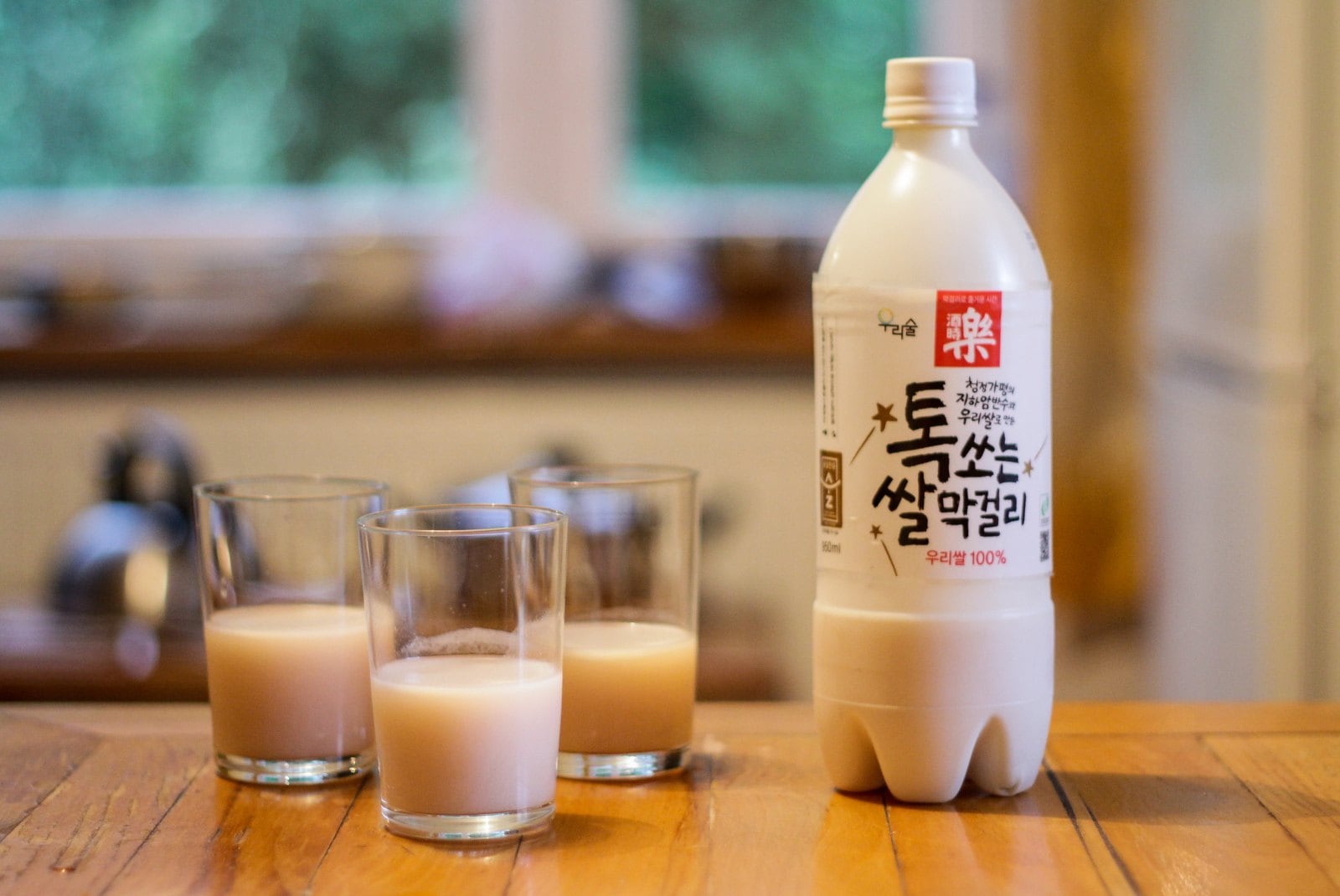
Photo credit Cytryna
Originally posted September 6, 2021
Reposted August 16, 2022
Origins and a Timeline.
Makgeolli, pronounced mahk-oh-lee, is Korea’s oldest alcoholic beverage. Learn the makgeolli history and how it was loved, unpopular, and loved all over again.
Makgeolli History: Origins & a Timeline
About Makgeolli – Over 2000 years ago
Makgeolli is a fermented rice wine, sometimes labeled as rice beer, that has existed for more than 2,000 years in Korea. It is made with rice, water, and a Korean starter yeast called nuruk.
The appearance is milky and cloudy and the taste is like yogurt – think of Yakult or Calpis with a little bit of alcohol, about 6-8% or even lower.
Because of its low alcohol content, refreshing appeal, and nutritional benefits (vitamins B and C, plus lactobacilli), the drink was first popularized with farmers and peasants as their lunchtime beverage.
Three Kingdoms Era, 1st Century BC
Makgeolli was first brewed in the Three Kingdom Era, as documented in the 1287 book about King Dongmyeong from 37 to 19 BC. The rice liquor was produced out of an agricultural society that was prolific with grains such as rice and barley.
Makgeolli was made to celebrate the pear blossom season (much like how sakura desserts are made during Japan’s cherry blossom season).
Joseon Kingdom, 1392 to 1910
The Korean beverage thrived for centuries during the Joseon Kingdom. It remained as a drink for farmers and the lower class. Some popular writers noted that when they moved up in society, they could no longer drink their beloved makgeolli.
Bans of the 1930s and 1960s
In the 1930s, the Korean government called for a ban on home brewing alcohol, which was most of the production of makgeolli at the time.
A few decades later in the 1960s, the war resulted in food and rice shortages which lead to a ban on the use of rice for alcohol production. Interestingly, this is when the production of modern-day soju increased with distilling tapioca and sweet potatoes.
In spite of the ban, makgeolli was still quite popular during the 1960s and 1970s.
1980s, Think global and not local
The 1988 Seoul Olympics opened up the locals to the world’s alcohol preferences, namely beer. The enjoyment of makgeolli took a sharp dive. It was considered a lowly local product especially as imported beverages popularized throughout the country. Plus, the new generation of drinkers considered it only a drink for farmers and old people.
21st Century Resurgence
The next generations of drinkers in today’s 21st century seek lighter and healthier options when it comes to drinking rather than the high alcohol percentages of soju.
Re-enter, makgeolli, this centuries-old beverage with low alcohol content and full of nutritional benefits like protein, fiber, vitamin b, vitamin c, lactobacilli that is ten times more than yogurt. Best of all, it perfectly pairs and balances spicy food.
Note that unpasteurized makgeolli has active lactobacillus, natural carbonation, and shelf life of 10 days in the fridge. Pasteurized makgeolli takes away fermentation, yet has a stronger taste and a shelf life of up to 1 year.
Sign up for my newsletter on the sidebar for blog updates and my travel insider tips! And, check out my vlogs on YouTube!


